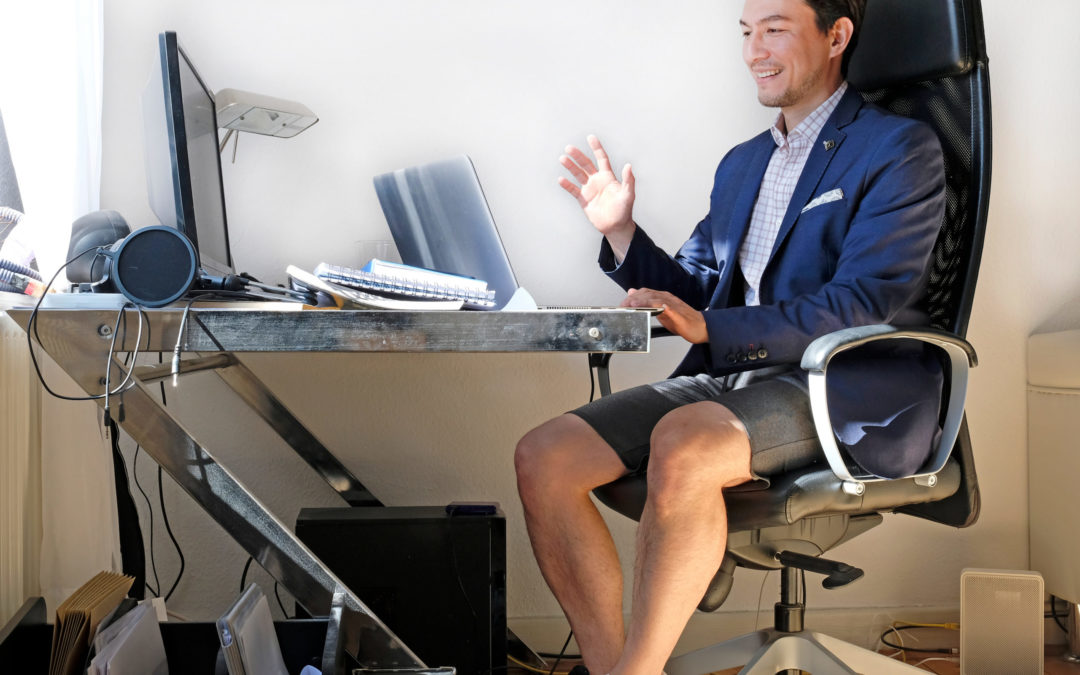
by Kate Evert | Feb 2, 2022 | Covid-19, Future of Work, Human Capital, Inspiration, Pivoting, Productivity, Strategy
Those of us of a certain age, grew up when Groundhog Day only meant one thing: one day in February when kids, especially, waited to see if there was a chance of an early spring.
Since the early 1990s, the phrase has taken on a new meaning, a day that seems to repeat over and over again … without end. In the spirit of that NEW meaning, we are rerunning last year’s February 2 Blog …
If Covid had a mascot, it would be the groundhog, at least in the United States. Various animals in different northern regions have stuck their necks out to foretell if winter is over. Every year on February 2, many cultures look for a sign that winter might end.
Recently, a podcast caught my attention; hadn’t hit start, hadn’t heard of the book, but who wouldn’t keep listening about a book called Wintering when it is January in the snowy North? The author, Katherine May, read a passage:
“Plants and animals don’t fight the winter; they don’t pretend it’s not happening and attempt to carry on living the same lives they lived in the summer. They prepare. They adapt.”
Suddenly you recall an Aesop’s fable, of the Ant and the Grasshopper. One creature is busy storing food for the cold weather, one plays in the sun and does not. You probably first heard this tale at about the age of five, and Aesop wrote, or at least recorded it, 5,000 years ago.
In her interview, the author says she feels that Covid has been one L O N G Wintering. Many of us have forgotten how to winter—how to store away preserves in our cellars for the seasons in which the harvests are not plentiful. Companies either don’t retain earnings for a rainy day or are pressured to pay them out to shareholders.
This February 2, the groundhog represents us emerging from our Covid Hibernation, looking for hope, an efficient vaccine distribution system, some semblance of normal. As we all know we will have at least six more weeks of Covid Winter, but perhaps we can resolve to prepare a bit more for our next “wintering”—whatever it may be—so that we might be more prepared, like the ant, and not have to go underground, like the groundhog.
![[Human] Capital Calibration](https://commonwealthhr.com/wp-content/uploads/2021/08/Website-Human-Capital-Calibration-1080x675.png)
by Kate Evert | Aug 17, 2021 | Competencies, Corporate Culture, Covid-19, Economy, Future of Work, Hiring, Human Capital, Human Resources, Jobs, Labor Markets, Productivity, Work From Home
Manufacturing equipment has come a long way since 1964. The environment in which you put your equipment? Back then, a somewhat level floor, a power supply, fans for HVAC, and what was a little grease on the floor? You turned it on, and assumed it would run. When you invest in a sophisticated machine today, you may build a special room, complete with its own HVAC and filtration. You wouldn’t dream of operating this equipment without the needed care and calibration. Your organization ensures that those responsible for the care and upkeep of this huge capital investment have the requisite technical expertise to protect your investment; you wouldn’t dream of leaving it to someone that didn’t know what they were doing. Yet why are we okay doing that to our largest investment: our employees.
The current conversation about “back to the office” seems a lot more like 1964, the year that Gary Becker published his first book on human capital. He rocked the world of economics and business with his work on the value of human capital –– people were one of your most valuable assets. It paid to further invest in them now that their life span was longer and technological advances made new skill acquisition imperative.
We sit here in 2021 as the seeming randomness of Covid deaths and quarantining has given Americans plenty of time to pause to reflect on the meaning of life. For many Americans, they are finally understanding their worth as a unique model of human capital. They’ve grown to understand the distinctive sets of skills that they have acquired, honed, and refined over the years AND the optimum conditions under which they perform. When an employer doesn’t understand that, enter…
The Great Resignation
One of my favorite Total Rewards thought leaders, John Bremen, has written a great article, advising how organizations can turn The Great Resignation into the Great Hire. He very rightly points out that more people have been hired in 2021 than have quit – which side of the equation is your organization on?
Solution? It’s not about going back to “the way we always did things.” It IS about recognizing the conditions under which employees can turn in peak performance and earn their organizations more gold.

by CHRC | Jun 22, 2021 | Covid-19, Economy, Future of Work, Labor Markets
We received an email from a friend sending her regrets for an event. She said: “still trying to get my sea legs” regarding the return to mostly normal in this mostly post-Covid world.
Who isn’t?
It’s as if we have all been on various desert islands, and now ships are arriving to take us back to our previous lives. Or so we thought. But some shipping lanes aren’t quite open, and others are overcrowded.
It is definitely NOT smooth sailing, and it is very hard to find your footing.
The seas roil as nearly all of us are entering the same markets at the same time causing quite a wake in the process. As a result of rushing to so many of the same places at once, it looks as though the water levels are rising around certain islands containing cars, lumber, housing, while some of the potential labor seems trapped on other islands. The port masters keep hoping some sort of craft will be able to ferry workers to the appropriate islands, but here’s the rub: everyone keeps using old charts of obsolete shipping lanes. Assumptions are being made that everyone wants to return to where they were in February of 2020.
This past week a few articles emerged with insights that defied all the economists: multiple months on a desert island make you re-evaluate your life. Sometimes you find yourself. Other times, you don’t want to be found. Sometimes you’ve thrown away the map determined to chart a new course. Other times you’ve taught yourself so many new skills, you want to get paid for those skills. And of course, there is the issue of the “real clothes” required when returning to civilization.
The real lesson that may emerge is that man may be a more rational actor than all the economic texts taught us. He may have found the meaning of his particular life and he is not willing to go back to the one he had before the Covid Tsunami.

by CHRC | Feb 2, 2021 | Covid-19, Future of Work, Human Capital, Inspiration, Pivoting, Productivity, Strategy
If Covid had a mascot, it would be the groundhog, at least in the United States. Various animals in different northern regions have stuck their necks out to foretell if winter is over. Every year on February 2, many cultures look for a sign that winter might end.
Recently, a podcast caught my attention; hadn’t hit start, hadn’t heard of the book, but who wouldn’t keep listening about a book called Wintering when it is January in the snowy North? The author, Katherine May, read a passage:
“Plants and animals don’t fight the winter; they don’t pretend it’s not happening and attempt to carry on living the same lives they lived in the summer. They prepare. They adapt.”
Suddenly you recall an Aesop’s fable, of the Ant and the Grasshopper. One creature is busy storing food for the cold weather, one plays in the sun and does not. You probably first heard this tale at about the age of five, and Aesop wrote, or at least recorded it, 5,000 years ago.
In her interview, the author says she feels that Covid has been one L O N G Wintering. Many of us have forgotten how to winter—how to store away preserves in our cellars for the seasons in which the harvests are not plentiful. Companies either don’t retain earnings for a rainy day or are pressured to pay them out to shareholders.
This February 2, the groundhog represents us emerging from our Covid Hibernation, looking for hope, an efficient vaccine distribution system, some semblance of normal. As we all know we will have at least six more weeks of Covid Winter, but perhaps we can resolve to prepare a bit more for our next “wintering”—whatever it may be—so that we might be more prepared, like the ant, and not have to go underground, like the groundhog.

by CHRC | Dec 15, 2020 | Community, Covid-19, Diversity, Equity, Inclusion, Innovation, Inspiration, Leadership, Strategy
December is a tough time of year.
I do not like the days getting shorter.
In typical Decembers, I do not like the craziness of holiday shopping, the hectic nature of too many invitations jammed into the early part of the month, and the frantic feeling BEFORE December 25th. But what I do enjoy about December? Candles and lights. The more candles and the more lights, the better.
Several years ago two wonderful authors entered my December. One wrote a moving children’s book and the other discussed how she, as part of an interfaith family, embraces December. The children’s book that I discovered, and delighted reading as a library volunteer, is called The Christmas Menorahs How a Town Fought Hate. It’s a true story from 1993, when Billings, Montana took a terrible hate incident and used it as both a teachable moment, and a moment of united defiance against hate. I then heard Chicago author, Barbara Mahany, discuss how she treasures the December darkness as deeply spiritual, as a way to go inside, to shut out the early December hecticness, to embrace the two candle-centric holidays that her family celebrates. In turn, I now cherish our Advent wreath that burns brighter as the days grow dimmer.
In this December of 2020, when most of the world is facing a darker December than most, when we could all benefit from lighting as many candles in the darkness until the vaccine lightens the darkness for us, perhaps you can find this special holiday book, and read it to a young person in your life? Or perhaps, in need of hope and light, you can just read it yourself to reaffirm that light is indeed stronger than darkness.

by CHRC | Nov 17, 2020 | Corporate Culture, Covid-19, Human Resources, Work From Home
By Lisa Aggarwal
I really thought that I was prepared.
As a Catholic school student, I endured endless detention threats regarding dress code violations. As an HR professional, I have mediated endless dress code disputes. I’ve coached clients on how to appear more professional via their attire. Corporate offices were previously “business casual,” now they are “CASUAL casual.” It seems that so much of our culture is linked to our external appearance. We are even taught to dress for the role we seek. I thought I had nailed how to dress for success.
But this is a new day. Just as Chicago has issued a new stay-at-home advisory for the next 30 days in response to rising Covid-19 cases, I get hit with these two articles. On the same day, within five minutes.
We know that video conferences and remote work have opened a gateway to a more casual corporate uniform–but are sweatsuits the new power suit? Sometimes I will throw a blazer on to give the impression I mean business (all while wearing my yoga pants)…but now I need one with shoulder pads? Maybe I should just keep a “Zoom shirt” in my office (by office, I mean kitchen) for video conferences and call it a day. Hopefully I don’t end up like one of my countless friends who accidentally have stood up during an online meeting only to expose their pajama bottoms.
Today, it seems that most of us are just seeking comfort, in any form. Perhaps this will cause a subliminal shift to pay less attention to external appearance and more to an employee’s value and contribution. Or one can only hope!
How has your business handled dress codes, or lack thereof?


![[Human] Capital Calibration](https://commonwealthhr.com/wp-content/uploads/2021/08/Website-Human-Capital-Calibration-1080x675.png)


